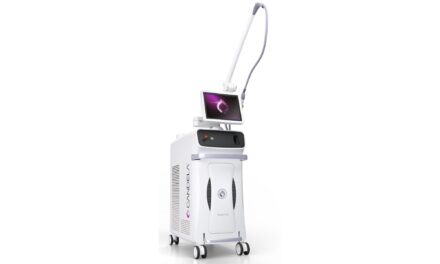Even after burn injuries heal, it is common that hypertrophic scars result. A commonly reported reason for a patient to seek treatment for their burn scar is to address concerns related to irregular skin discoloration. Fractional ablative laser scar revision (FLSR) is known to work by stimulating a wound-healing response to the laser microthermal zones.
A new study published in Lasers in Surgery and Medicine (LSM), the official journal of the American Society of Laser Medicine and Surgery Inc (ASLMS), looked at changes in scar melanin index after CO2 FLSR via noninvasive probe measurement in patients of various Fitzpatrick skin types. The study, led by Sanjana Kurup and titled, “Treatment of burn hypertrophic scar with fractional ablative laser-assisted drug delivery can decrease levels of hyperpigmentation,” was selected as the May 2023 Editor’s Choice.
“This work is important because it is the first extensive study of fractional ablative laser treatment for patients with skin of color,” said Kurup. “Unlike what has been commonly reported, patients with baseline dark skin pigmentation can be treated with these types of lasers to treat burn scars.”
Sixty-three patients began a course of FLSR between October 2019 and December 2022 and underwent at least two procedures with corresponding pre- and postoperative evaluations.
The study found that the majority of patients showed an improvement in hyperpigmentation after FLSR. According to the authors, the data from this study leads us one step closer to being able to develop interventions for hyperpigmentation that are even more effective.
Sanjana Kurup is a 4th-year medical student at Howard University College of Medicine. She will be pursuing her dermatology residency next academic year at Howard University. She conducted research in the burn research lab at MedStar Health Research Institute under the guidance of Dr Bonnie Carney and Dr Taryn Travis.





